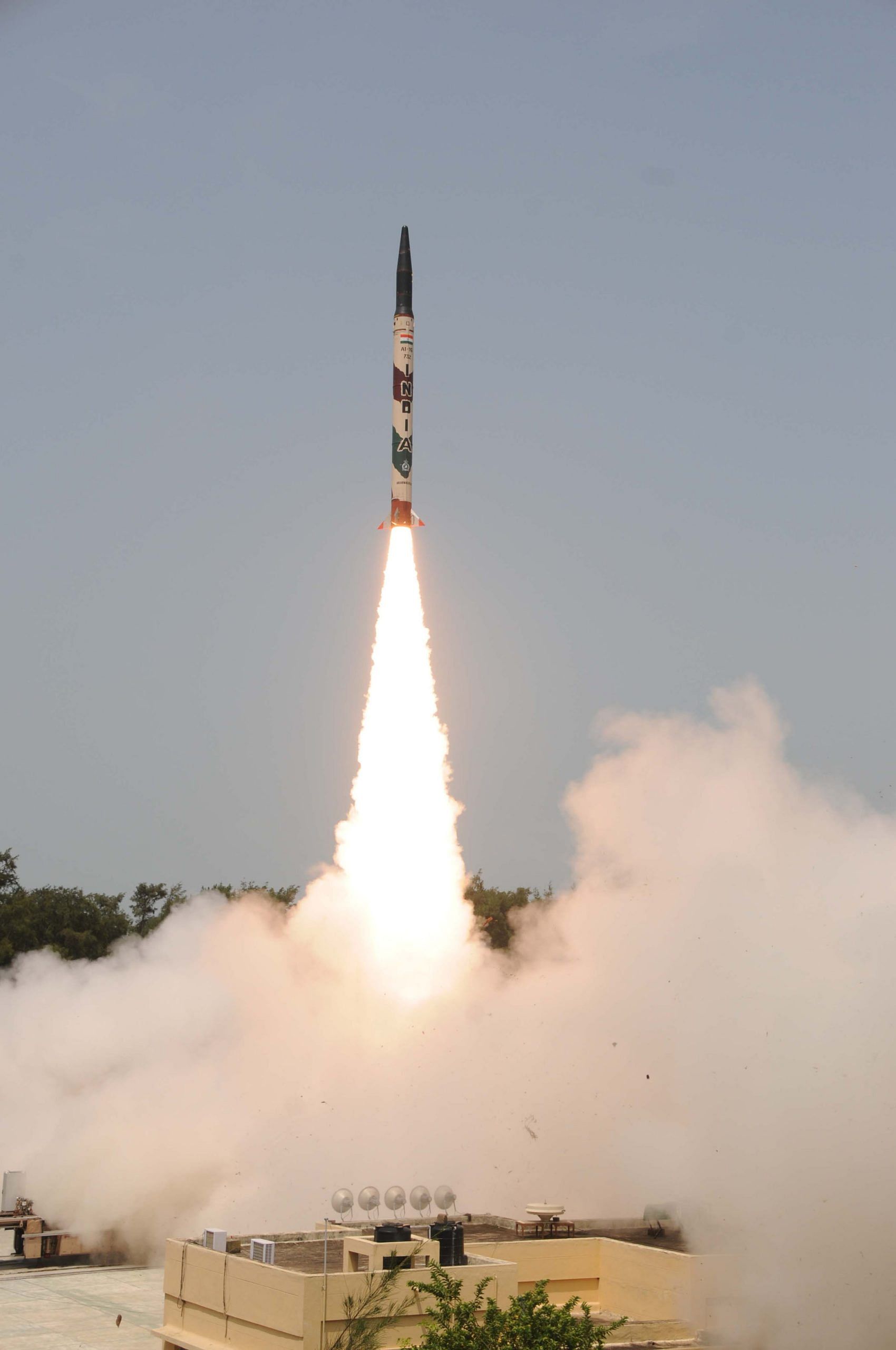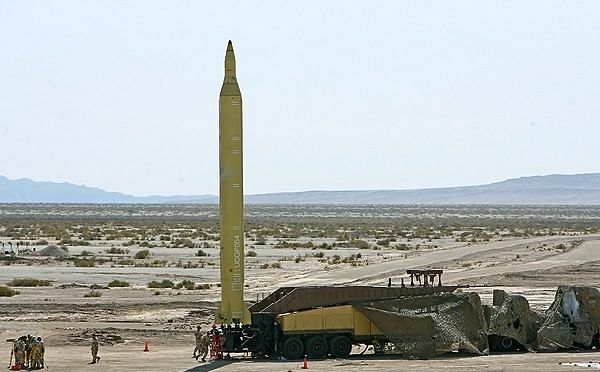New Delhi: Iran rained 180 missiles, reportedly Fattah-1 hypersonic and Shahab-3 ballistic missiles, on Israel earlier this week in its largest-ever such attack.
Iran’s attack came as Israel launched a ground offensive in Lebanon after the killing of Hezbollah leader Hasan Nasrallah in air strikes on Beirut.
Iran is said to have developed an advanced arsenal of missiles in view of the conflicts in the region. A key lesson from the ongoing wars in Europe and West Asia is the strategic advantage missiles bring when dealing with an adversary.
The pros of deploying missiles are that they are cheaper than using an aircraft to launch attacks, involve comparatively lesser maintenance and training costs, and can cause damage without a human needing to cross over to the adversary’s territory.
Major militaries worldwide have invested resources over the last decade to build their arsenal of ballistic missiles. Launched by chemical, biological, or nuclear warheads, ballistic missiles operate in a boost phase and later assume a free-fall trajectory due to an in-built guidance mechanism.
Ballistic missiles have been extensively used during the Iran-Iraq war, the Afghan civil war, the war in Yemen, the 1991 and 2003 Persian Gulf wars, the Russian military actions in Chechnya and Georgia, and the Syria and Ukraine wars. Iran used them against the American forces deployed in Iraq in 2020.
Ballistic missiles can be equipped with conventional or non-conventional warheads. Whereas conventional warheads contain explosives and are for targeted attacks, non-conventional warheads carry nuclear, biological or chemical weapons for mass destruction.
These missiles can be deployed using various platforms, such as land-based silos, submarines, aircraft and mobile platforms. Based on their attack range, they can be close-range, short-range, medium-range, intermediate-range or intercontinental. Ballistic missiles can be air-, submarine- or ship-launched, depending on the launch platform.
Missiles with a 1,000 km or more range are long-range ballistic missiles (LRBM), and those with a 300 km–1,000 km range are short-range ballistic missiles (SRBM). Close-range ballistic missiles (CRBM), launched in combat, have a range of less than 300 km.
According to the Arms Control Association (ACA), the United States, the largest producer of weapons in the world, has several operational ballistic missiles in its inventory — the Army Tactical Missile System (ATACMS) Block I, ATACMS IA, Minuteman III (LGM-30G) and D-5 Trident II (SLBM).

The ATACMS is a short-range, road-mobile, solid-propellant-fueled, surface-to-surface ballistic missile developed in America and first used during the 1991 Persian Gulf War, whereas the Minuteman III is a three-stage, solid-fuelled, intercontinental-range ballistic missile.
Also Read: IAF chief AP Singh red-flags Tejas delay, says China ahead in technology & production capacity
Close Range Ballistic Missiles
Countries such as Russia, China, North Korea, Pakistan, India, and Iran are at the forefront of developing and possessing the Close Range Ballistic Missile (CRBM) technology.
According to the Defense Intelligence Ballistic Missile Analysis Committee (DIBMAC), China currently has the highest number of CRBMs. Its arsenal includes nearly 18 types of CRBMs, with the WS-64, BP-12A, M20, A300 and BRE-8 having a 280 km range.
A DIBMAC report said China is developing more CRBMs, with a range of under 300 km. Currently, the country is developing B611MR and WS-640 CRBMs, with an anti-radiation homing seeker.
Indian CRBM missiles have a 65-250 km range. Four CRBMs operated by India are Pinaka-II Guided (65 km), Prithvi I (150 km), Prahar (150 km), and Prithvi II (250 km).
Pakistan has three types of CRBMs, having a 50-200 km range. The Hatf-1 missile has a range of 50 km, NASR (Hatf-9) has a 60 km range, and Abdali (Hatf-2) has a 200 km range.
Iran operates three types of CRBMs, with ranges between 75 km and 250 km. Russia operates majorly six types of CRBMs, with ranges between 40 km and 120 km. Israel has eight kinds of CRBMs, with ranges between 35 km and 300 km.
Short Range Ballistic Missiles
Some of the most famous SRBMs include the Russian SCUD missiles that remain in use in several countries. According to the DIBMAC, the Russian SS-1C Mod 1, also called the SCUD B, has been exported to more countries than any other type of guided ballistic missile.
Iraq used the SCUD missiles during the 1991 Persian Gulf War. Moreover, North Korea has produced its version of the SCUD B and developed extended-range variants, including the SCUD C, the SCUD D, and the SCUD ER.
Under its grey zone warfare approach, China has deployed modern solid-propellant SRBMs in the vicinity of Taiwan. Just as CRBMs, China has developed the most SRBMs, with ranges extending from 300 km to 850 km. The CSS-6 Mod 2 missile, one among the seven types of SRBMs the country has, has an over 850 km range. All the SRBMs that China possesses use solid propellant as their fuel.
India has the Agni-1 solid-propellant SRBM with a range of 700 km. Pakistan has two solid-propellant SRBMs. While Ghaznavi has a range of 300 km, Shaheen-I has a range of 750 km.

Russia has two SRBMs — a solid-propellant one and a liquid-propellant one. While the liquid-propellant SCUD B has a range of 300 km, the solid-propellant SS-26 has a 350 km range.
Medium Range & Intermediate Range Ballistic Missiles
Medium Range Ballistic Missiles (MRBM) & Intermediate Range Ballistic Missiles (IRBM) remain armed with non-conventional warheads. China, India, Iran, North Korea, Pakistan and Russia are now developing or flight-testing the MRBMs or IRBMs with nuclear warheads.
China deploys the nuclear-armed MRBMs, the CSS-5 Mod 2, to ensure regional nuclear deterrence. China also possesses conventionally armed CSS-5 Mod 4 and Mod 5 MRBMs for precision strikes. Moreover, the CSS-5 Mod 4 (DF-21C) can hold at risk or strike logistics and communication nodes, regional military bases, and airfields or ports.
India continues to develop its long-range ballistic missiles. India has the Agni family of missiles, with its Agni II MRBM and Agni III IRBM already deployed. India has been conducting tests of Agni-IV since 2010.
In September this year, India successfully launched an Intermediate Range Ballistic Missile, Agni-IV, which validated all operational and technical parameters.
In March this year, the Prime Minister of India announced the successful launch of the Agni-V ballistic missile with Multiple Independently Targetable Re-entry Vehicle (MIRV).
Pakistan has tested its solid-propellant Shaheen-2 MRBM several times since 2004. In 2015, Pakistan began testing a longer-range Shaheen-3 MRBM and, in January 2017, began testing the MIRV version of the Ababeel MRBM.
According to DIBMAC, China has also deployed the CSS-5 Mod 5 (DF-21D), an anti-ship ballistic missile (ASBM) with a range exceeding 1,500 km and a manoeuvrable, re-entry vehicle (MaRV). The same equips China’s People’s Liberation Army with the capability to attack aircraft carriers in the western Pacific Ocean.
In July 2017, China also displayed a new MRBM designated the DF-16G. On the other hand, the DF-26 IRBM, according to the Chinese media, can carry a conventional or nuclear payload, with which it can launch conventional medium and long-range precision strikes against key targets on land and large ships at sea.
Iran’s Shahab 3 MRBM is the longest-range variant, reportedly reaching targets at a nearly 2,000 km distance. Iran has also developed and conducted launches of Sejjil, a solid-propellant MRBM, which Iran claims has a range of 2,000 km.

Iran also possesses the Emad-1 missile, which, officials claim, is Iran’s first long-range missile that is guided throughout its flight and capable of hitting targets with high precision. Iran also announced plans for an Emad-2, which will have more precision than the Emad-1. Moreover, Iran launched the Khorramshahr-2 — a long-range missile guided throughout its flight using the fins installed on the warhead — in 2019.
Intercontinental Ballistic Missiles
China, Russia, and North Korea are the countries that have made progress in ICBMs. Russia is known to retain over 1,000 nuclear warheads on ICBMs. Russia has the largest ICBM force outside the United States.
The Russian SS-27 Mod 1 ICBM is deployed in the silos of six regiments. Russia is also developing a lighter and shorter-range road-mobile missile based on the SS-27 Mod — known as the RS-26 Rubezh (US designator SS-28). It will be capable of hitting targets anywhere in Europe. Russia has also developed the Sarmat ICBM. The range of Russia’s ICBM capabilities starts from 5,500 km and goes to 11,000 km.
China is strengthening its strategic nuclear deterrent force with the development and deployment of new ICBMs, according to DIBMAC. China also has nuclear-armed, liquid-propellant CSS-3 (DF-4), limited-range ICBMs, and CSS-4 (DF-5) ICBMs capable of reaching the United States. Further, the CSS-10 Mod 2 has been deployed to units within the PLA Rocket Force, making China capable of targeting most of the continental US.
China is also developing the CSS-20 (DF-41), a new Multiple Independently targetable Reentry Vehicle-capable, road-mobile ICBM, and the DF-31AG road-mobile ICBM. The range of China’s ICBMs starts from 5,500 km and goes to 12,000 km.
(Edited by Madhurita Goswami)







Agni V is not a Medium-range missile. It has a range of 5500+ KM (more like 7000-8000 KM), which makes it an ICBM. Author did not mention the Pralay or the Agni-P missile either. Not a very well informed article.